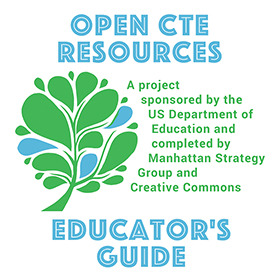Open CTE Resources: Educator's Guide
Survey of the OER Landscape
A Working Definition
Open Educational Resources, or OER, can be difficult to define comprehensively. A commonly cited definition, promoted by the William and Flora Hewlett foundation, contends that OER are “teaching, learning, and research resources that reside in the public domain or have been released under an intellectual property license that permits their free use and re-purposing by others.” The concept of re-purposing is critical to this definition: educational materials are most likely to be effective when they can be customized to the needs of individual students and teachers.
In the strictest sense, any material can be classified as an OER if they meet the Hewlett criteria. In practice, OER generally takes the form of digital resources – Word documents, PDFs, web pages, audio files, videos, and java apps because these materials are most easily shared. These resources can range from decidedly simple, such as activity descriptions documented in a PDF file, to highly complex, fully interactive self-paced courses. OER exists across the full spectrum of learning materials and in nearly every subject imaginable.
Goals of OER
Traditionally,
education materials have been produced by content publishers who sell them for
profit. With the advent of the internet and a global push for increased
collaboration among educators, the desire to share materials freely while still
protecting the copyrights of the original creator have grown. In addition,
there is a growing expectation that when public funds are used to produce
educational materials, the resulting materials should be a “public good.” Considering
these trends, the goals of both using and creating OER are to:[1]
Increase the availability of high quality learning resources to all audiences and populations
Decrease the high costs traditionally associated with educational resources
Encourage collaboration between educators, both within their own organizations and externally
When evaluating existing OER and the methods available to create new resources, these goals should be at the forefront of any analysis.
Understanding and Evaluating OER
It
is important to note that effective OER do not need to take a particular form
or align to a specific structure. Different instructional objectives will
require a different set of conditions for accomplishing them. That being said,
the goals associated with open educational resources remain the same across the
spectrum for OER, and accomplishing them is inherently more complex than simply
attaching an open license to an existing resource. An OER should strive to
incorporate as many of the following qualities as possible:[2]
They will be pedagogically sound. That is, they will effectively convey content and help to achieve the learning objectives set for a particular class. To put it simply, an effective OER will be of exceptional quality.
They will be easily shared. An OER that cannot be accessed by others fails to contribute to a larger community and remains a local resource.
They will be flexible. Truly effective OER will provide value to a wide variety of users. They must be agile enough to do so. The amount of customization that is both possible and necessary will vary by both technology used and license chosen.
How Are OER Relevant to CTE?
OER present a number of important applications to CTE students and teachers. First and foremost, OER represents a means of obtaining high-quality learning and teaching materials at little to no cost to users. Additionally, OER represents a tremendous opportunity for CTE teachers to collaborate with the greater community – to create, share, and learn from one another.
Resource Challenges
The challenges that educators face of preparing students for the workforce are numerous and growing. In 2013, high school graduates who were not enrolled in college faced a stark unemployment rate of 30.9% (a 50% increase since 2007).[3] A primary reason for prolonged high unemployment is a profound skills mismatch, commonly referred to as the “skills gap,” where employers struggle to fill highly skilled positions in industries such as manufacturing, transportation, and utilities. Job growth is forecasted to grow quickly in these and other STEM-based areas. At the same time, secondary CTE programs have faced funding decreases on both the federal, state, and local level. CTE educators are tasked with the difficult job of meeting the demand for higher skilled students with less resources available to them. OER has the potential to address substantial resources challenges both within the CTE community and the education system at large.
Research into the precise financial and achievement impact of OER is currently underway around the globe. As of publication, both formal studies and anecdotal experience suggest that there is much to be gained from widespread adoption.[4] A recent study of the "Bridge to Success" initiative found that students who utilized material developed for an open course were more likely to pass a math assessment than those who took a traditional course. They were also more likely to recommend the materials to others. Similarly, as part of research conducted for this guide, the National STEM Consortium reported that an unprecedented number of students passed the GED test utilizing the materials found in the openly licensed "STEM Foundations" course. One explanation for this impact is that open content allows for collaboration between institutions that might not have been possible in other circumstances, thus allowing the utilization of resources that have been created, reviewed, and revised by a large community of experts.[5]
Educator Effectiveness
OER also offer the opportunity
to increase educator effectiveness. Unlike traditional materials, OER can be
shared between educators on a school-wide, nation-wide, or even global scale
without fear of copyright infringement. This allows teachers to access
materials that they may not have discovered otherwise, and vastly increases the
speed with which new and relevant content can circulate.5 OER can be
shared in their original or “remixed” form, to give educators a basis for
customizing their own classroom. Virtual communities dedicated to finding and
sharing the best resources are located all over the web – from dedicated
professional learning communities (PLCs), to blogs, to the informal social
media sphere. This presents a
dynamic collaboration opportunity for the evolving priorities of the CTE community. Several examples of this
type of collaboration can be found in the following communities:
Open Educational Resources (OER) in the K-12 Classroom – learning community hosted by EdWeb
CTE Online Groups – industry-focused groups hosted by the CTE Online portal
#EdTechChat – Twitter-based discussion group using the hashtag #edtechchat
Why Are Interactive OER Important?
Interactive content presents high potential value to the CTE and general education communities. Today’s students can frequently be classified as “digital natives,” a generation that is comfortable with, and in many cases, more apt to engage with technology-intensive resources than the traditional ones available to them.
Recent research supports the notion that interactive digital content enhances student learning by allowing students to be the architects of their own learning experience. In one instance, a University of Colorado study found that students utilizing PhET simulations (examples of highly interactive OER that are discussed later in this guide) were three times more likely to master a complex scientific concept than those exposed to traditional classroom instruction.
The disadvantage of interactive digital content is that even small components take extensive time and resources to produce, and therefore are often more expensive to use. OER are inherently free to use (though not to develop) and eliminate price-related accessibility concerns.
What Are The Different Types of Interactive OER?
Spectrum Overview
From a pedagogical perspective, types of interactive OER can broadly be discussed in two contexts – as “packages” and as “pieces.” Packages take familiar forms such as complete online courses and e-textbooks. Pieces, more formally known as “learning objects,” might take the form of tutorials, games, and simulations. They can be integrated into instruction where most needed, rather than defining the entire course.
As discussed above, OER exist in nearly every format and packaging imaginable. Exploring the landscape will help you to conceptualize what is possible with OER, and from there to determine what is best for your circumstances.
Interactive OER Examples
The following section offers a sample of the various types of OER currently available to the CTE community, with links to explore and download. These resources were selected because they were easily accessible via a web browser. They also represent the wide variety of format and content types available as OER.
It is important to note that this list is not intended to be comprehensive – OER can be created from virtually any digital resource. Consider the following as a starting point from which to begin your search and creation process.
Course:
Health Information Technology Foundations
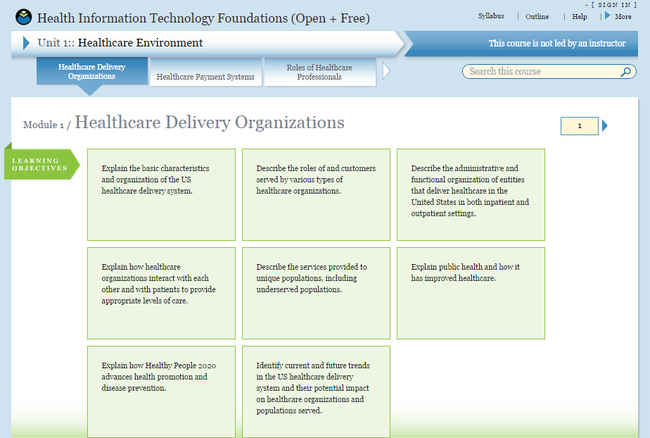
This free course is hosted by the Open Learning Initiative (OLI) and can be accessed either as a guest (without log-in) or utilizing an instructor-provided course key. The latter option allows students to save progress and instructors to view student progressions.
Curriculum: Construction Technology - Interior
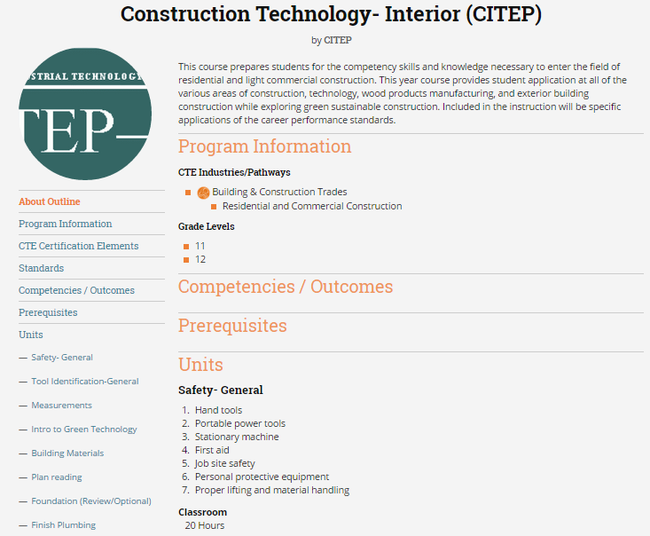
This
comprehensive curriculum is provided by CTE
Online. It
includes lesson plans, activities, and assessments, along with all supporting
resources (PowerPoints, PDFs, etc.). CTE Online resources require a free
account to view.
Textbook: Fundamentals of Electrical Engineering I
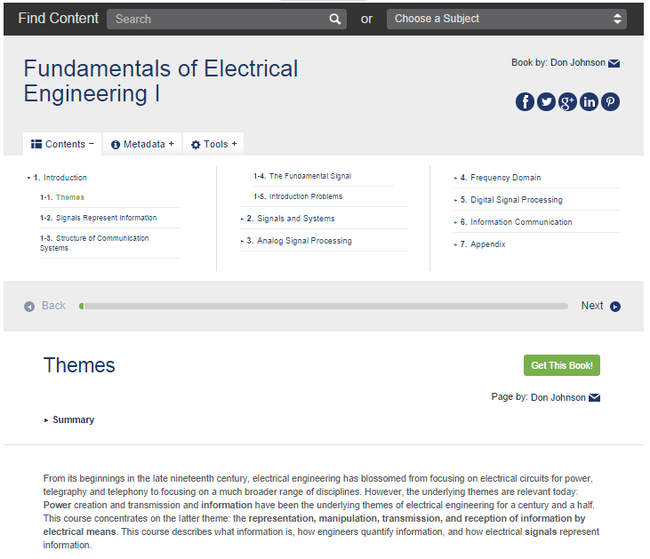
This textbook is hosted by OpenStax CNX. It offers students and educators the option to view content in their browsers (no log-in required) or download as a PDF or EPUB file. Educators are also able to re-mix content using the web-based MyCNX authoring tool.
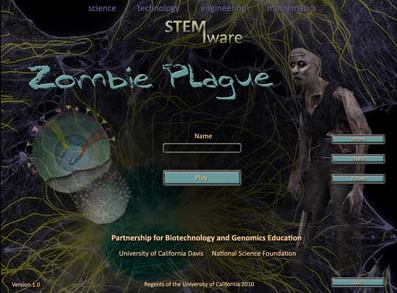
This free game is offered by the Partnership for Biotechnology and Genomics Education (an initiative of UC Davis). According to the creators, “the science content embedded in the software deals with diagnosis, treatment strategies, and career connections that are applicable to any disease caused by viruses, bacteria, or fungi.” Embedded assessments allow teachers to track student interactions.
Activity: Investigative Report Writing
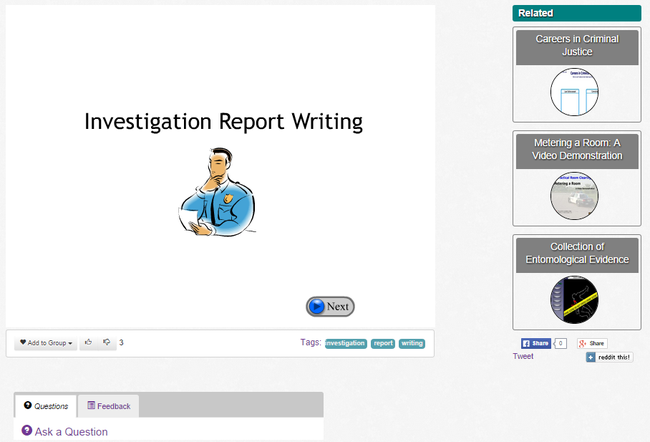
This learning object is hosted by WISC-Online, a creation of Wisconsin’s Technical Colleges. Learning objects can be viewed in browser (with or without log-in) and some may be downloaded as SCORM packages.
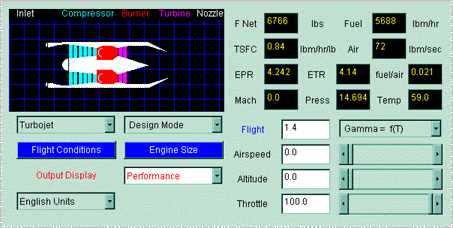
This simulation is hosted by NASA. It allows students to investigate how a jet engine produces thrust by interactively changing the values of different engine parameters. The simulation can be run in-browser or downloaded for offline access.
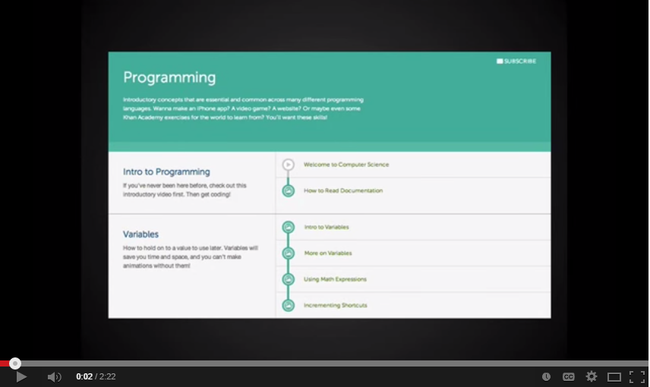
This video is created by Khan Academy.
It can be accessed via the Khan Academy website or on YouTube. YouTube videos
can often be embedded into LMS modules or other resources.
